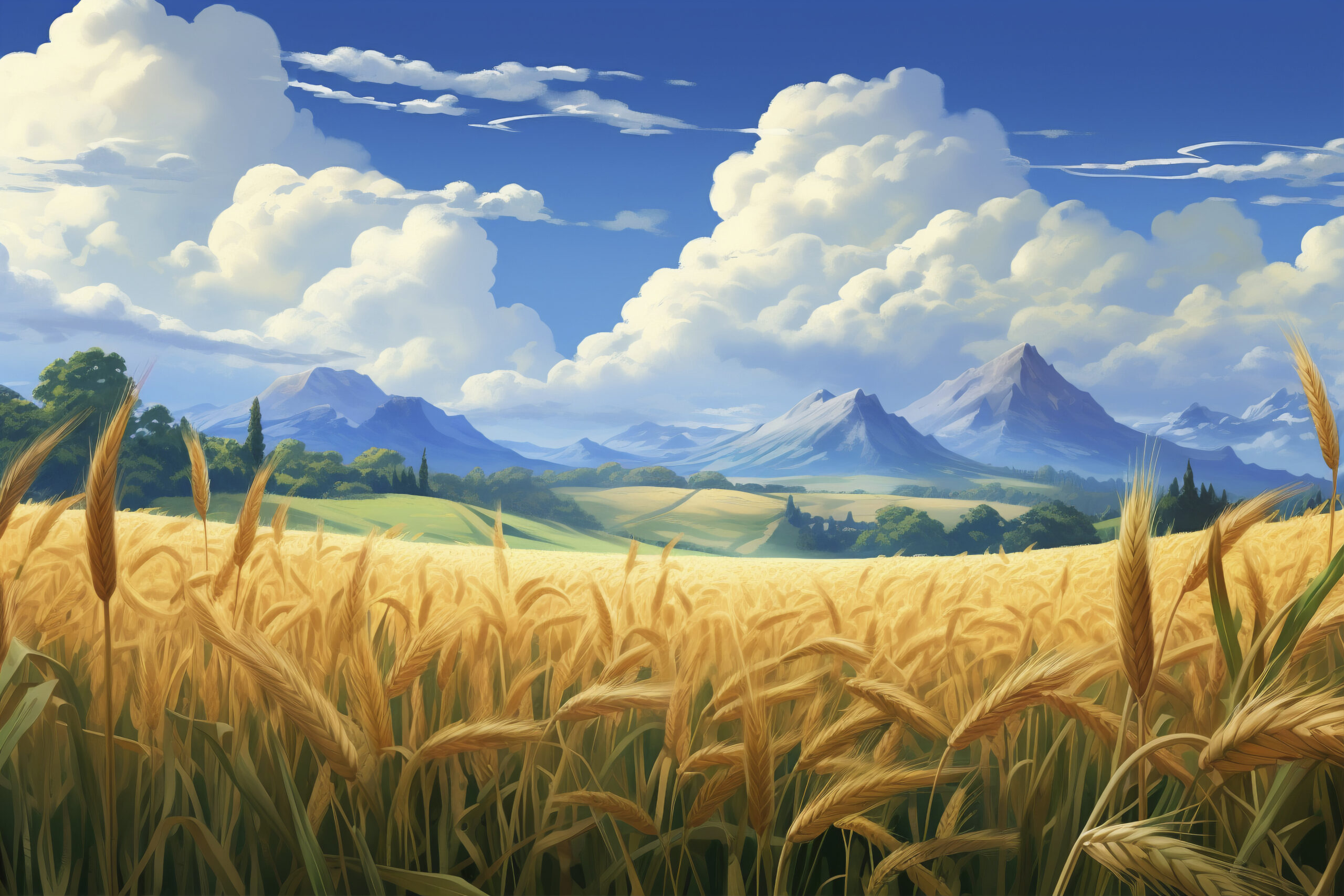
Introduction
Wheat, one of the oldest and most vital cereal crops, plays a fundamental role in human civilization and nutrition. Cultivated for thousands of years, it remains a cornerstone of diets across the globe. This article delves into the history, cultivation, varieties, nutritional benefits, and global significance of wheat.
History and Origins
Wheat’s origins trace back to the Fertile Crescent, a region often referred to as the cradle of civilization. Archaeological evidence suggests that wheat was domesticated around 10,000 years ago. Over millennia, it spread from the Middle East to Europe, Asia, and eventually the Americas, becoming a staple crop in numerous cultures.
Cultivation and Varieties
Wheat is a hardy crop, adaptable to a wide range of climates. It thrives in temperate regions and is grown in over 120 countries. The two primary types of wheat are:
Common Wheat (Triticum aestivum): This is the most widely cultivated species, accounting for about 95% of global wheat production. It is primarily used for making bread, pasta, and pastries.
Durum Wheat (Triticum durum): Known for its hard texture, durum wheat is mainly used to produce semolina flour for pasta and couscous.
Nutritional Benefits
Wheat is a powerhouse of essential nutrients. It provides carbohydrates, protein, fiber, and various vitamins and minerals, making it a crucial component of a balanced diet.
Conduct replied off led whether?
- Carbohydrates: Wheat is an excellent source of complex carbohydrates, providing sustained energy.
- Protein: Wheat contains a significant amount of protein, particularly gluten, which is essential for bread-making.
- Fiber: Whole wheat is rich in dietary fiber, aiding digestion and promoting gut health.
- Vitamins and Minerals: Wheat is a good source of B vitamins, including thiamine, riboflavin, niacin, and folate, as well as minerals like iron, magnesium, and zinc.
Global Significance
Wheat is integral to global food security, with an annual production of around 760 million metric tons. It is the second most-produced cereal after corn and a major export commodity. The largest producers include China, India, Russia, and the United States.
Wheat in the Diet
Wheat is incredibly versatile in the kitchen. Here are some common wheat-based products:
- Bread: A staple in many diets, bread comes in countless varieties, from soft white loaves to dense, whole grain options.
- Pasta: Made primarily from durum wheat, pasta is a beloved food worldwide, available in numerous shapes and sizes.
- Pastries: Wheat flour is the foundation for an array of pastries, cakes, and cookies.
- Breakfast Cereals: Many breakfast cereals use wheat, providing a convenient and nutritious start to the day.
Challenges and Future Prospects
Despite its importance, wheat production faces challenges such as climate change, pests, and diseases. Researchers are continually developing new wheat varieties with improved resistance and higher yields. Sustainable farming practices and technological advancements are crucial to ensuring the future of wheat cultivation.
Conclusion
Wheat’s journey from ancient fields to modern tables underscores its enduring significance. As a versatile, nutritious, and globally essential crop, wheat will continue to play a pivotal role in feeding the world. Understanding its history, cultivation, and benefits helps appreciate the importance of this golden grain in our daily lives.